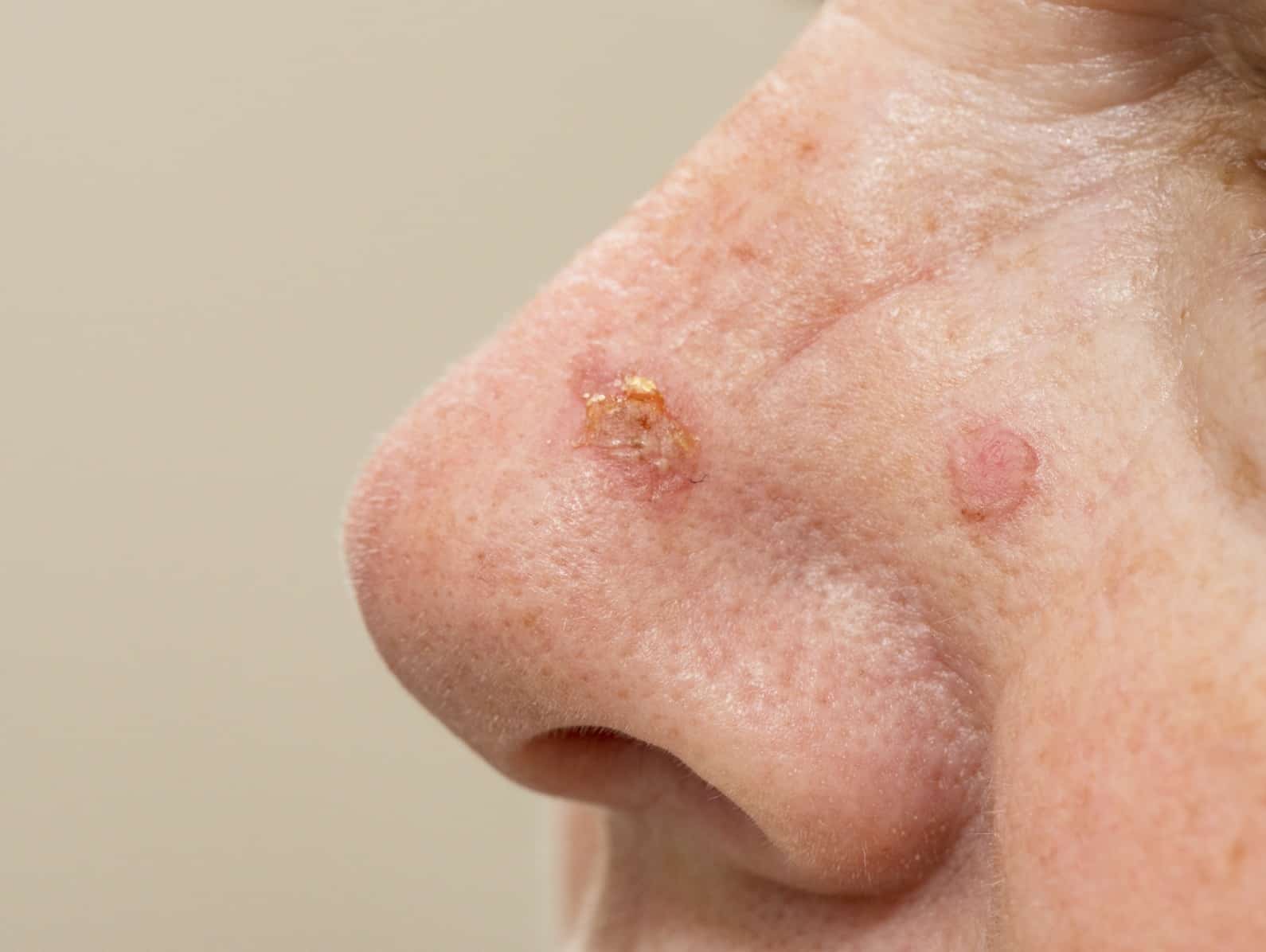The areas affected by actinic keratosis are the face, neck, hands, arms, lower limbs and scalp of patients with baldness.
On examination, one generally finds plaques of different colors (red, beige, flesh color or even brown) and of very small size, crusty in appearance, palpable and rough to the touch: they are often found by the skin. palpation and are almost invisible to the naked eye. The multiple nature of the lesions is more frequently observed. Around the lesion, signs of photoaging such as brown spots or redness may be present.
Actinic keratosis should be monitored: any change in appearance such as inflammation or induration, bleeding , rapid increase in size, pain should prompt a prompt consultation.
One of the forms of actinic keratosis is actinic cheilitis , it manifests itself at the level of the lower lip .
